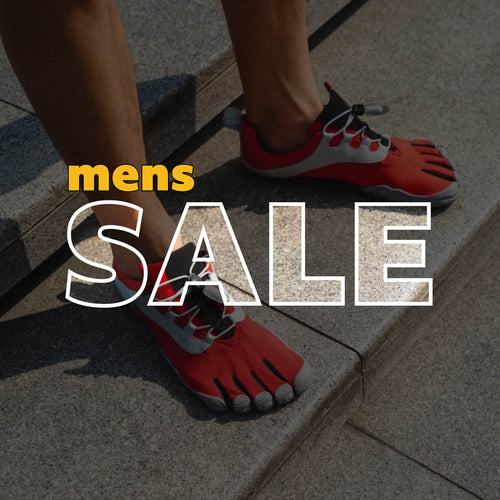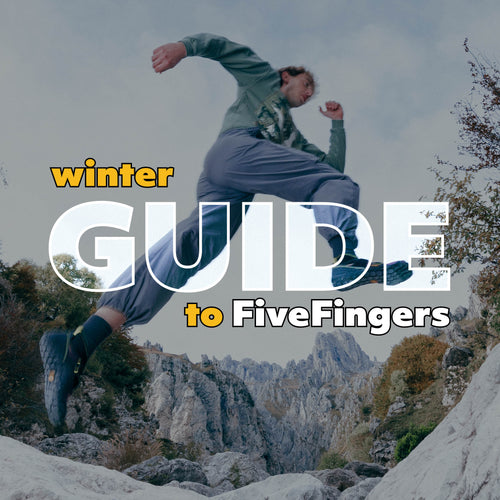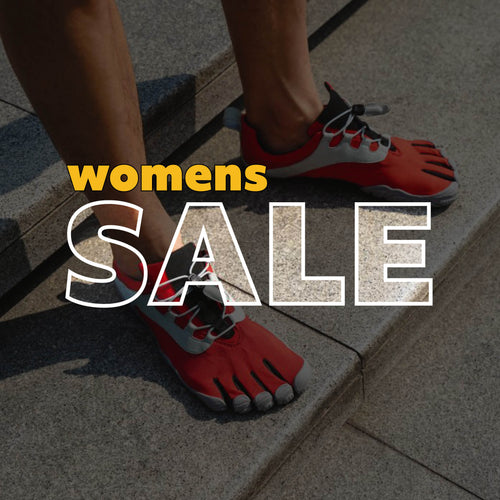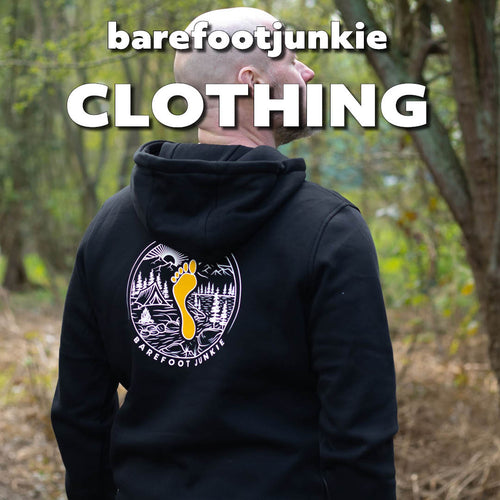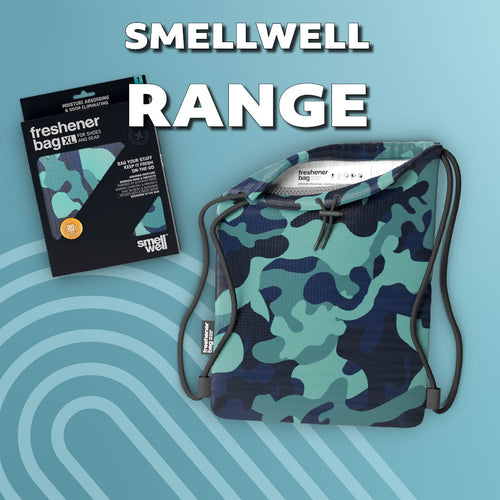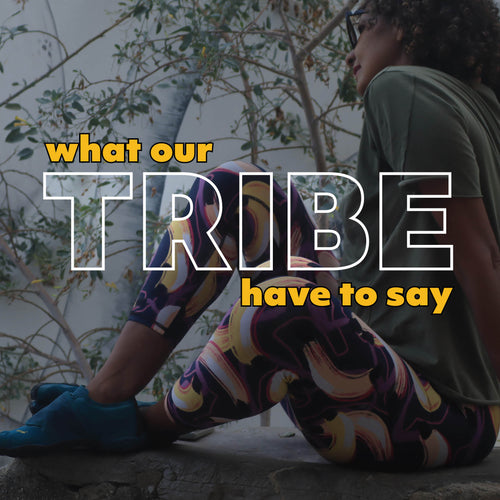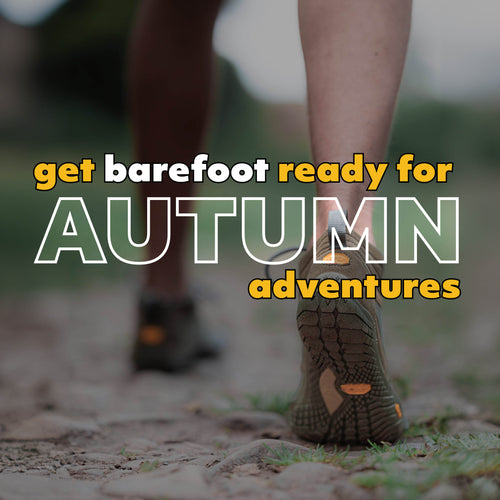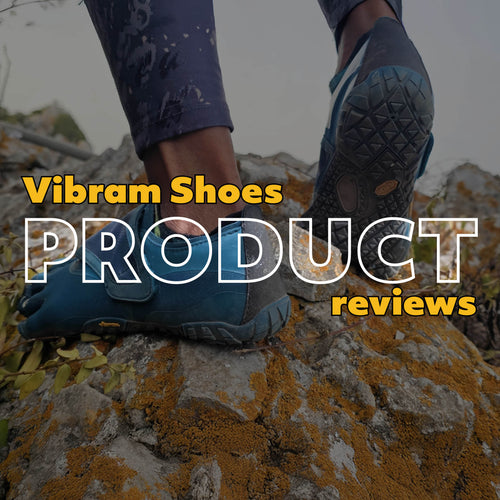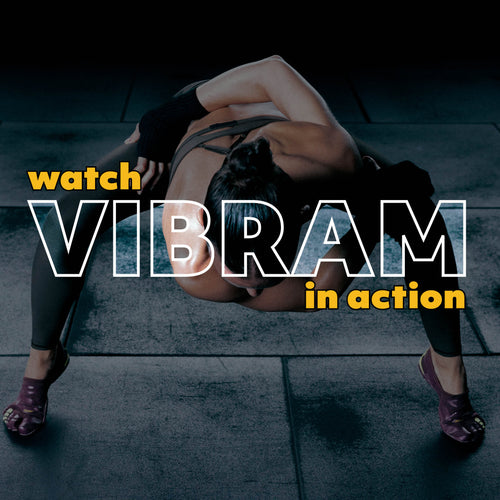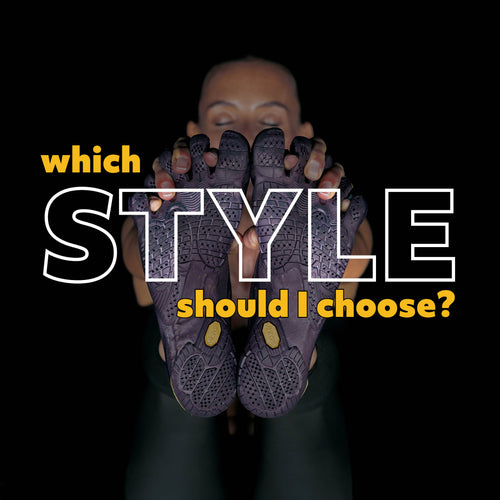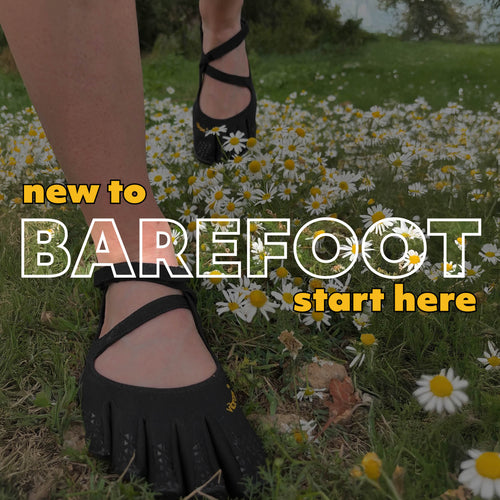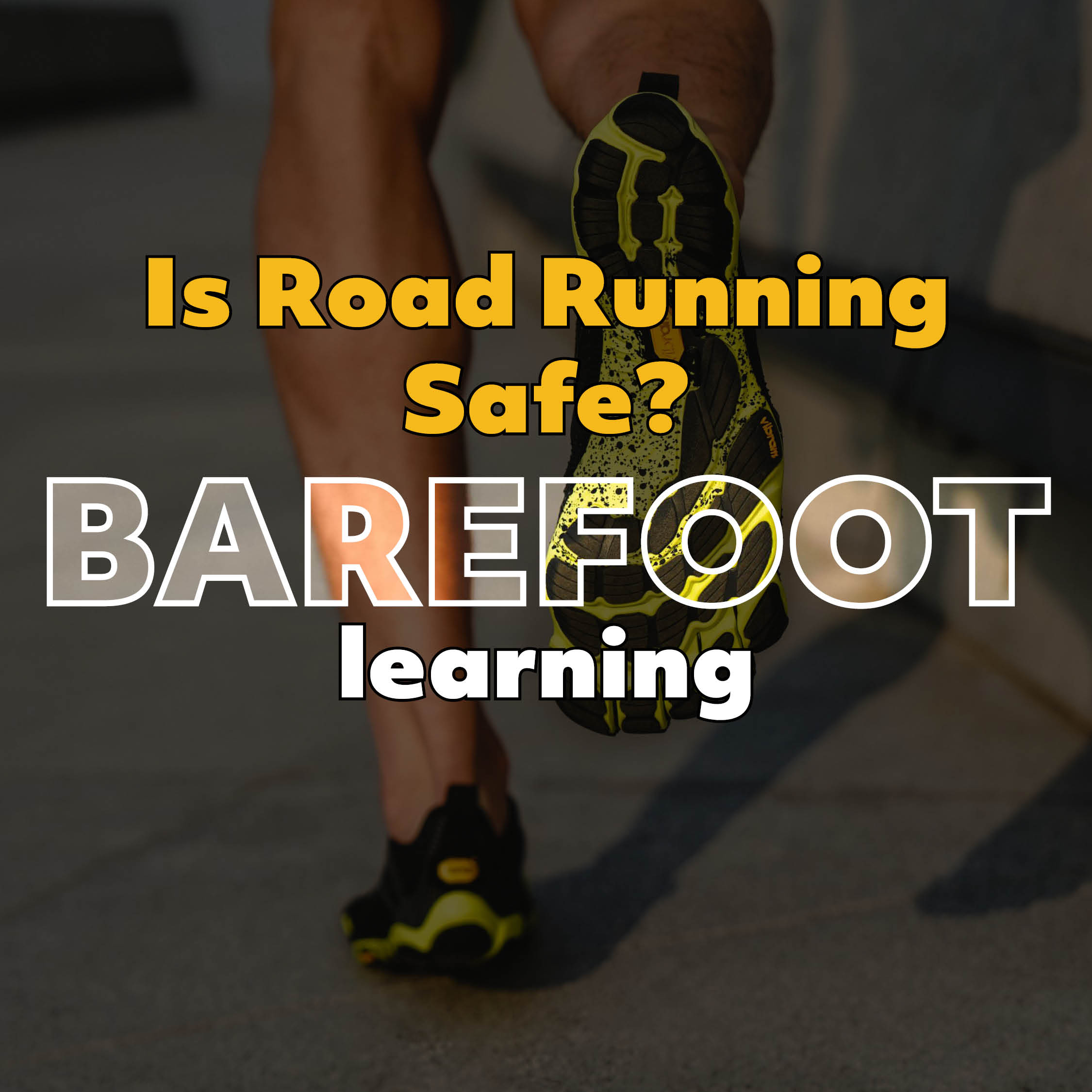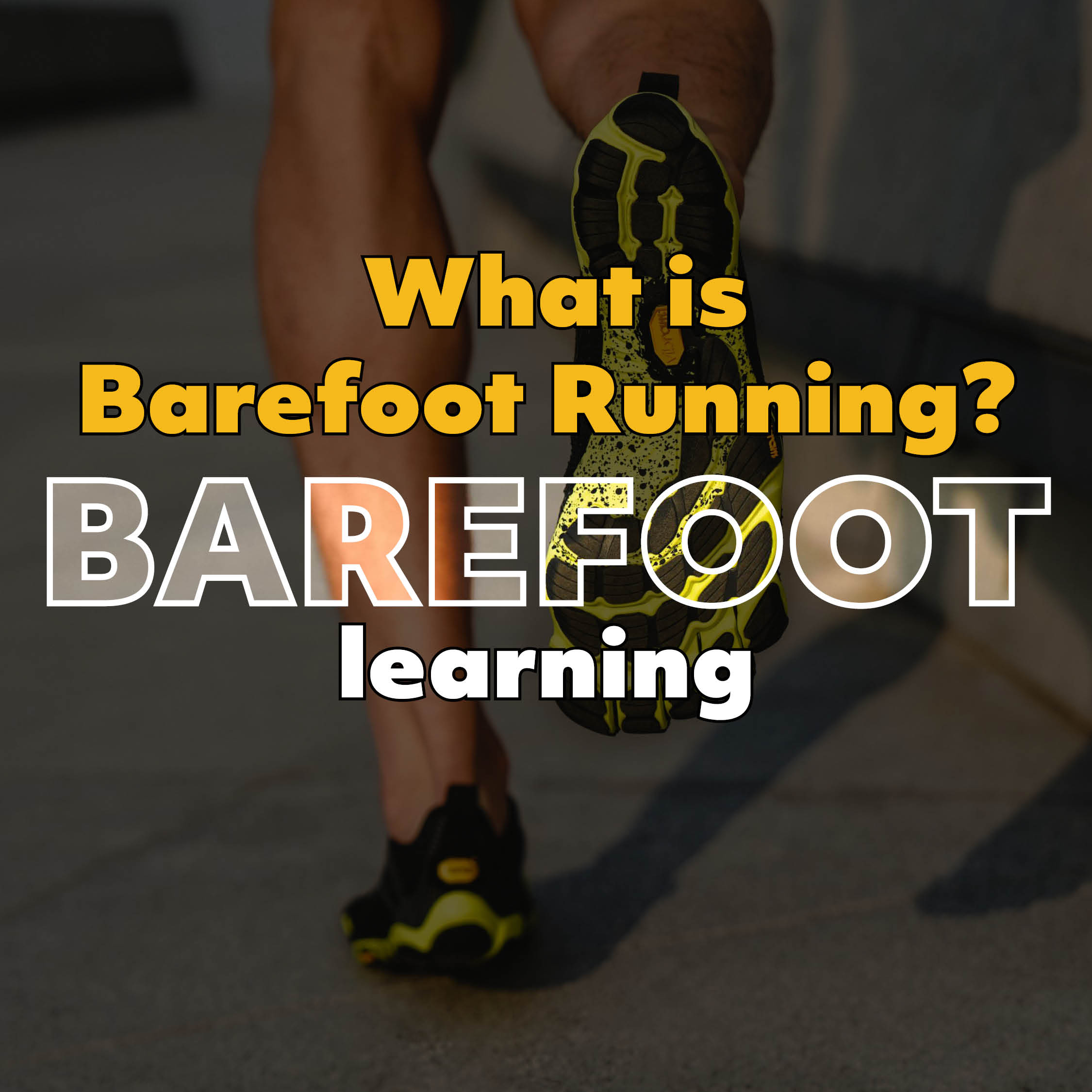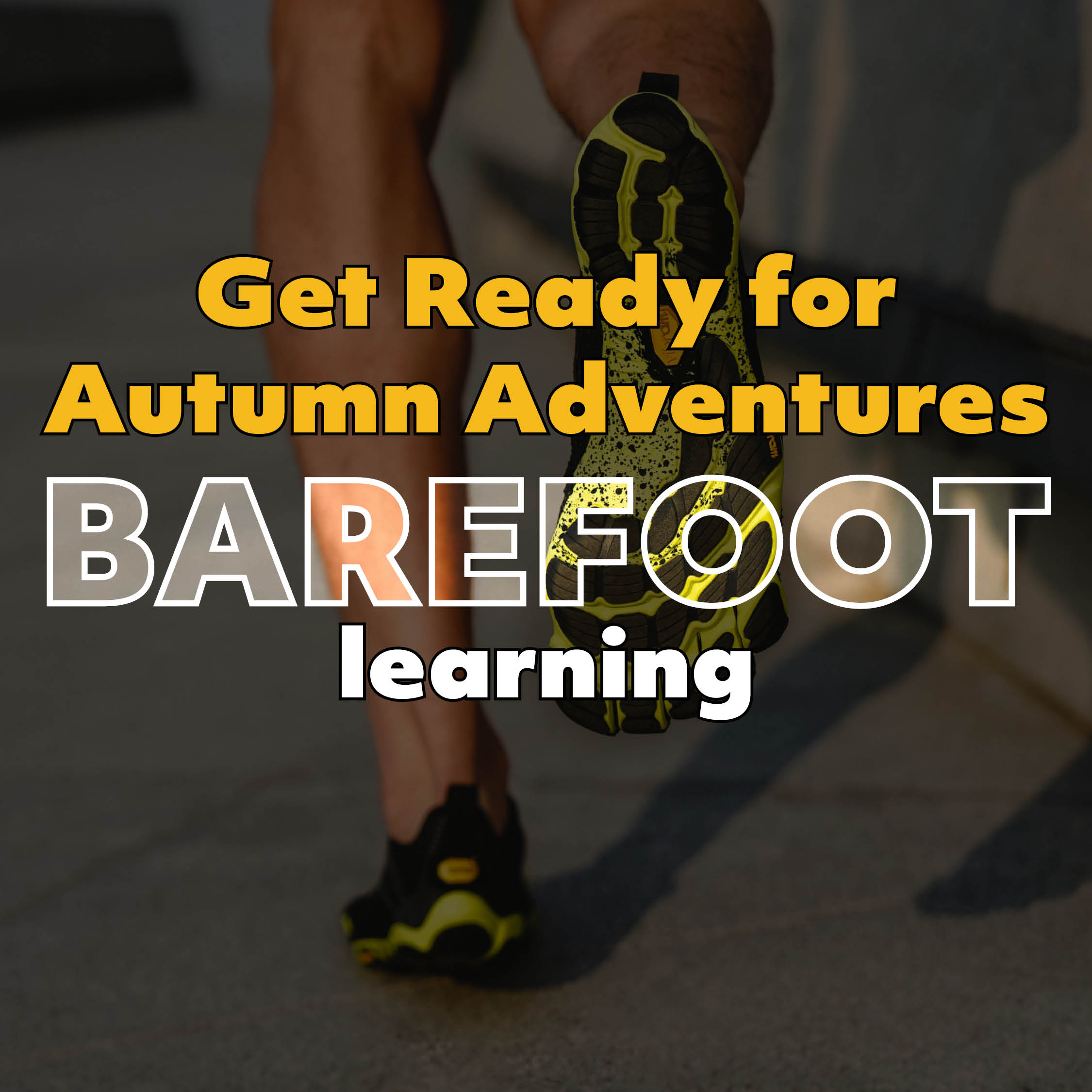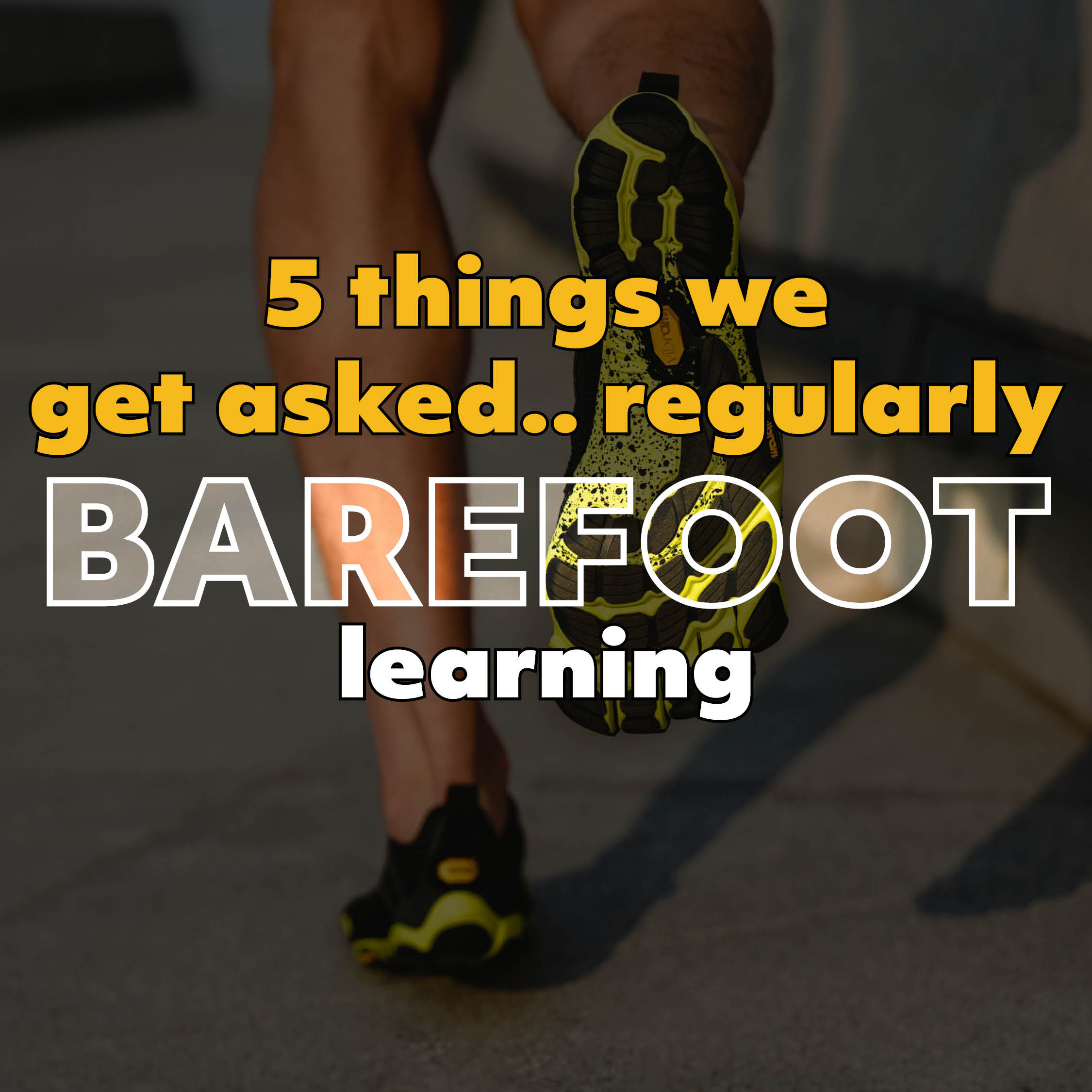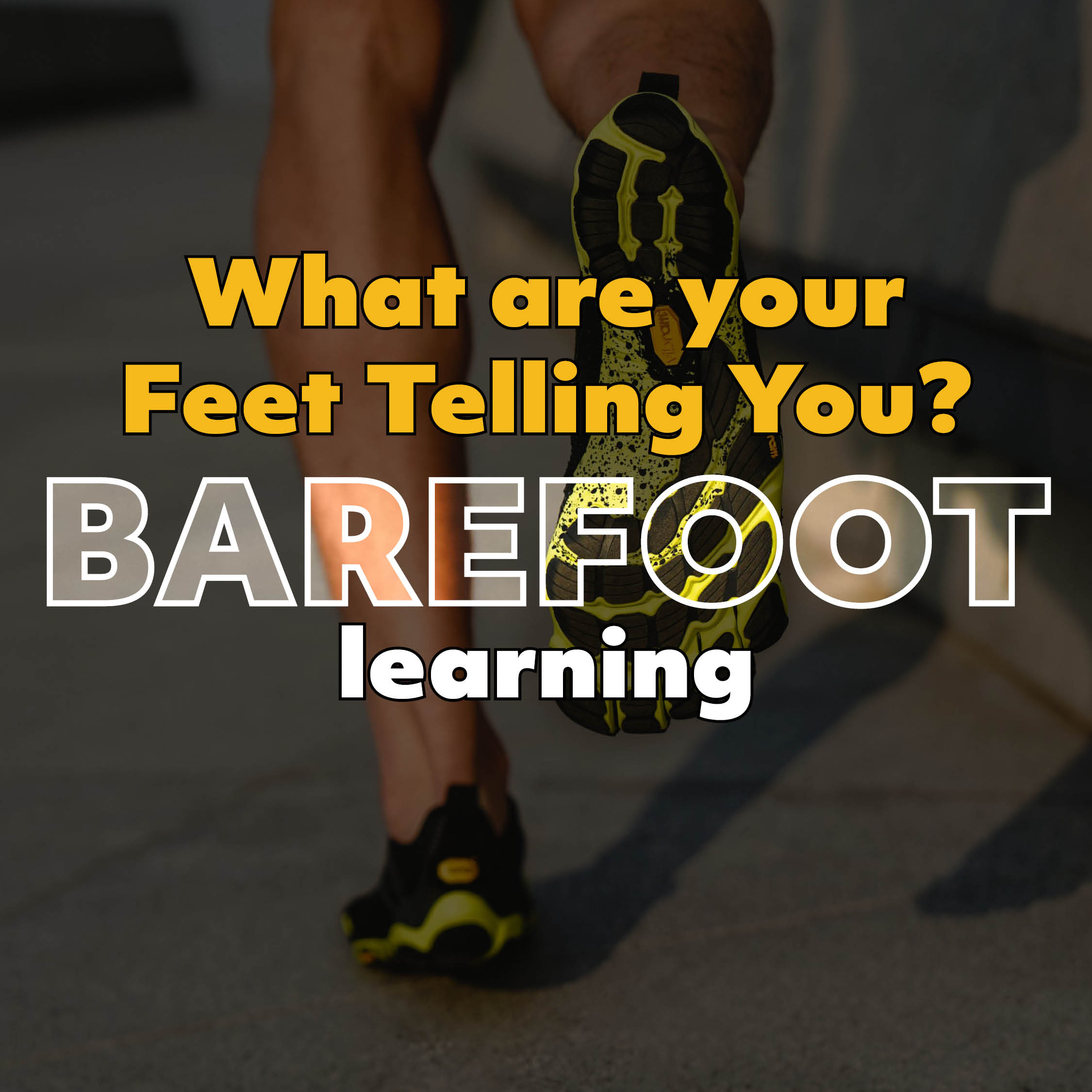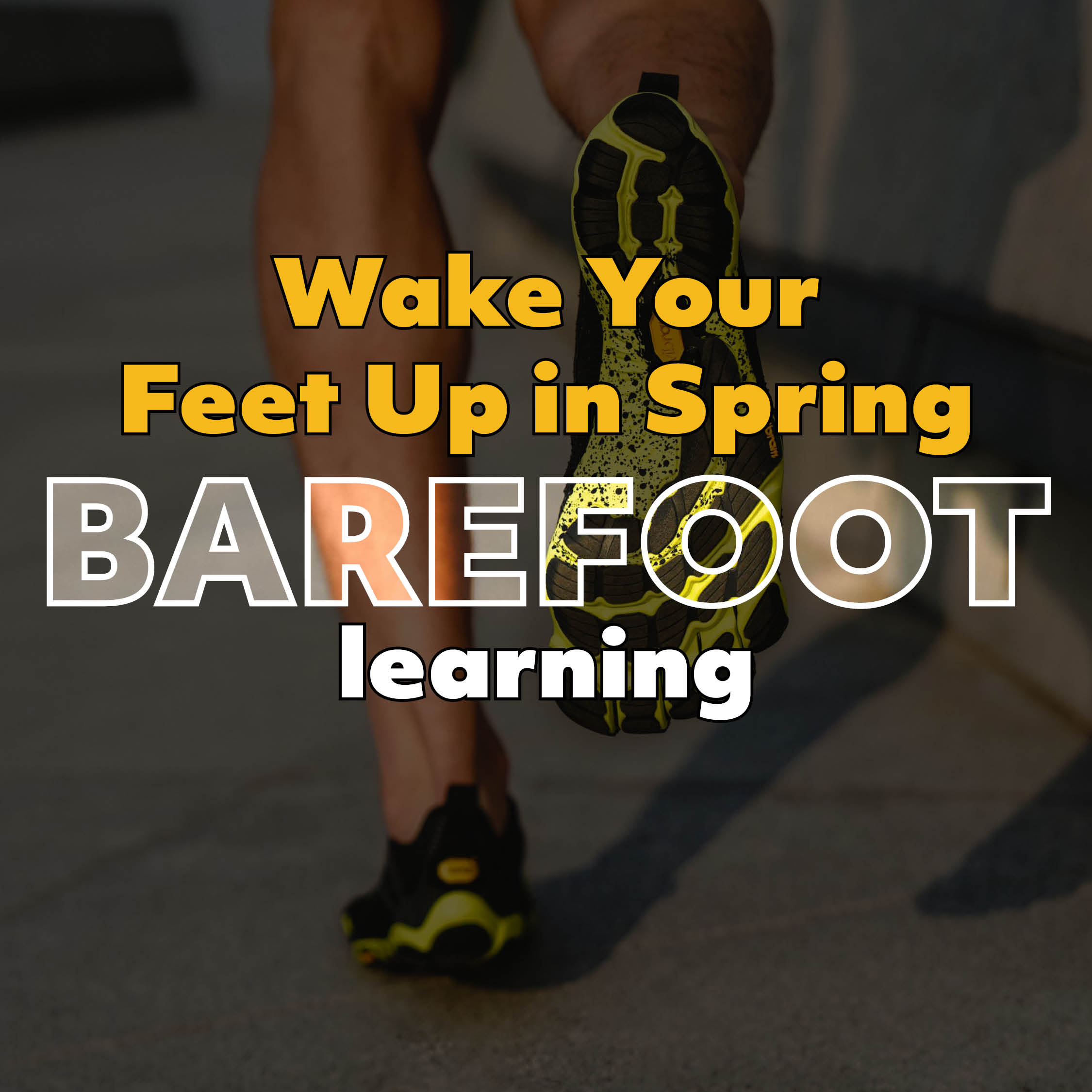Barefoot Junkie : "Part two from Ben Turner from Athlete Adventure and his transition to Barefoot Running. After his own reasearch Ben came to us to find out more about Vibram Fivefingers, Barefoot Running and how they may help him with his series of extreme challenges. The following blog is written entirely by Ben and his own journey into the world of a more natural approach to running and training footwear."
This is part two of a three-part study into the world of barefoot running. I will be running the 16 Marathons Project barefoot to investigate the theories of barefoot running. The science behind the benefits of barefoot running is limited and largely anecdotal, therefore, I aim to dig into this myself through a culmination of research and internet ‘science’ and my own experiences through 1000 miles of barefoot running to help YOU better understand the FACTS and filter out the nonsense.
Disclaimer. I am NOT a physiotherapist, nor do I hold a degree in Sports Science. I investigate certain topics such as barefoot running though the physical testing of Athlete Adventure challenges, academic research from professional and qualified subject matter experts, books, and finally through the improvements I see through clients and friends whom I have helped.
“I was so frustrated with the pain in my shins and ankles that I threw all my trainers out and went for a run barefoot. I haven’t looked back since.” Athlete Adventure
Definitions
Supination - The rolling of the foot outwards when walking or running, you strike the ground with the outer edge of your foot.
Pronation - The rolling of the foot inwards when walking or running, you strike the ground with the inner edge of your foot.
Pronation and Supination
Human beings have been running around for millions of years, conventional running shoes have been around since the 1970's. Interestingly, before the invention of the modern running shoe, terms such as pronation and supination were not associated with running.
Every body is different and there will be no two runners who are exactly the same, and the same goes for running techniques. From youth to maturity you are conditioning the body as it grows and develops, the body will run how the body has adapted to run. Rolling of the ankle may go unnoticed until actually scrutinised, and this, although it can be painless, is something that will likely impact range of movement in later life.
When buying trainers, a large percentage of the population go to a running or sports shop, and buy a pair of shoes that look good, feel okay to wear and off they go. Some will go to a running specific shop and get a gait analysis and a pair of shoes that will suit a particular gait. However, most of these shops will try and sell you a pair of trainers that they have in store, that may or may not match your gait and may or may not help, they are a trying to make a sale at the end of the day and most will not invest time in you. This leaves the very few who actually have their running style analysed, stripped back, coached and then have a shoe that fits them correctly. This will lead to discomfort as you are running as the forces of the shoe could be physically acting against your running.
What does this mean!?

With all of the latest and greatest shoes on the market today, there is so much choice; there some that will counter over pronation, or over supination, there are some that offer increased arch support, some that are minimalist, some that have increased bounce in the sole and others that are just plain bonkers! With all this choice, its all too easy to buy the wrong shoe and end up risking injury or pain every time you go out for a run. No wonder its so hard to get out for that first run!
I have found that through years of wearing different types of trainers ranging from pronation support, ankle support, extra bounce, carbon fibre sole and top of the range trail shoes, I developed ankle, calf and shin pain when running for prolonged periods of time, no matter what shoe I wore. There was a common denominator to this pain... Shoes!
Barefoot running and the art of gentle running counters arguments for diagnoses such as supination, pronation and over extension etc. through the natural movement that the brain actually wants to the body to perform. I could not get over the difference that simply taking off my shoes (they were the wrong ones it turns out!) and going for a run on a grassy field, barefoot.
The brain and feet work as they should, feet automatically line up in parallel and pronation and supination become a thing of the past. Take away the common denominator of trainers and the there is nothing to stop the feet from doing what feet should do, then you are ready to find the right protection (if indeed you want it, some do not) for your feet.
Are Orthotics and Expensive Innersoles the Answer?
I personally do not believe in orthotics or internal support, unless you have specific physiological or medical requirements. Afterall, the foot has already served is rather well for the last few million years. Creative and alluring marketing and advertisement has brainwashed us to buy certain shoes and believe the ‘science’ behind them. In reality, the foot is the most successful architectural structure known to man, it is a complex network of bones, ligaments and muscles that create a strong arch. No architect or structural engineer worth their salt would ever put a support directly under an arch, as they are strongest when loaded from the top. So why do you need expensive orthotics and shoes that add upward support to the arch or your foot? This takes away from that strength and makes the foot reliant on this support, weakening them and resulting in a flatter foot. It is important to note that the studies are not yet conclusive for or against orthotics.

The Dreaded Heel Strike
The idea behind heel striking was that it would increase the range of movement in the legs while moving. Ultimately, this puts massive force through the runners heel with no suspension. This led to the development of many early trainer models that increased heel cushioning and even created a curved sole to facilitate this movement.
Anyone who has read Christopher McDougall’s book, Born to Run will recognise the heel strike as bad running form. But why is this?
The problem here is that running is a forward movement, and landing with your heel first, in front of you, acts a breaking force to momentum. You would strike with the heel and have the foot point upwards, before rolling to the toes and repeating. Think of it as trying to role square wheels. Secondly, this movement puts strain on the knee by generating force in a direction that over extends the joint and does not flow through the natural frame of the skeleton.
Thirdly, this movement puts two to three times the body weight through the heel and straight into a solid chain of bones without a shock absorber. If you have ever locked the suspension on your bike and cycled over a speed bump, you will be able to recreate this feeling, its not comfortable.

If you look at the foot, you will notice that it is wider at the front that it is at the heel, so why would you want to put the most force through the smallest part of the foot rather than the widest? The wider the surface area, the more of the force is dissipated and absorbed. Thus, decreasing the amount of force across the surface area. The smaller the surface area, the greater the impact of the force (think snow shoe vs stiletto).
Running forefoot and midfoot allows the initial force to be absorbed by the structure of the foot and through the suspension system of the feet and legs. The forefoot hits the ground, and the initial force is absorbed through the foot before the lover and upper legs. This process first begins with the toes, as they impact the ground, they will spread and the surface area is increased. Next time you are barefoot, stand up straight and put one leg slightly in front of the other, shift your weight onto this foot through your forefoot and watch what happens to your toes, you will notice they will spread more with increased weight placed through them.
This begs the question as to why shoes are pointed in the toe box!?
In 2014, Dr Daniel E Leiberman of Harvard University, Massachusetts, conducted a study into barefoot running and the adaptations the human body makes in relation to the impact of barefoot vs shod running. In this study it was concluded:
'Habitually barefoot runners tend to avoid landing on the heel and instead land with a forefoot or midfoot strike. The bulk of our published research explores the collisional mechanics of different kinds of foot strikes. We show that most forefoot and some midfoot strikes (shod or barefoot) do not generate the sudden, large impact transients that occur when you heel strike (shod or barefoot). Consequently, runners who forefoot or midfoot strike do not need shoes with elevated cushioned heels to cope with these sudden, high transient forces that occur when you land on the ground. Therefore, barefoot and minimally shod people can run easily on the hardest surfaces in the world without discomfort from landing.'
In simple terms this means, running in conventional trainers encouraged a heel strike, usually because of the latest innovations of cushioning and elastic heel padding; however, as soon as those shoes are taken off, the runner adapts to a more forefoot and midfoot strike, reducing the impact through the heel, engaging the suspension system through our foot, ankle, lower and upper leg.

Speaking from my personal experience, running barefoot undoes the habits developed through years of running in shoes. Firstly, heel striking while barefoot hurts! The receptors in the feet send signals to the brain and tell it not to do that anymore, your brain responds with the most logical action which is to run landing on the forefoot and midfoot. Don’t get me wrong, the transfer from running in trainers to barefoot can be uncomfortable and your feet will ache for some weeks to start, but in that time your feet will adapt and strengthen, your running technique will become more efficient and the physical movement of running may change altogether (depending on old habits).
I believe that stripping the movement down to the bare elements and perfecting the basics specific to the individual, forms the ideal foundation on which to develop, introduce shoes and progress in an intelligent and efficient manner. In this method we are able to reinvigorate the culture of understanding behind running form. Essentially this is the same as running around the garden when you were a child in barefoot (I bet you weren’t worried about over pronation then!).
So, I should never wear trainers!?
Not necessarily, once a firm foundation of gentle running has been found, and the habit of gentle running has been created, then finding the right shoe that works for you is a lot simpler. Whether this is the Vibram Five Fingers, which I think are genuinely brilliant*, or any other pair of specific trainers, it is important test a variety of shoes on at a store with a treadmill (many have them). This will allow you to feel the shoe (without doing the standard and pointless walk around the store!) and implement gentle running to a certain pair of trainers or shoes. You control your running technique, trainers do not. Everyone is different and not everyone want to become a barefoot runner, or indeed has the time to transfer across, but setting a firm foundation without shoes is crucial to healthy running not just now, but in later life too.

NEXT :
Part 3 of this investigation to barefoot running will share with you the methods that I employ to develop a more efficient running style and implement the art of gentle running.
*I am an ambassador of Vibram Five Fingers through Barefoot Junkie. They have been kind enough to provide me with some of their products to support the 16 Marathons project. I must stress that I am not paid by the company. As with UFIT and The Protein Works, I ONLY aim to represent companies to my readers whom I know and trust and would genuinely recommend.
From Barefoot Junkie : Follow Ben on his amazing challenges at Athlete Adventure

